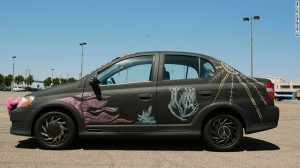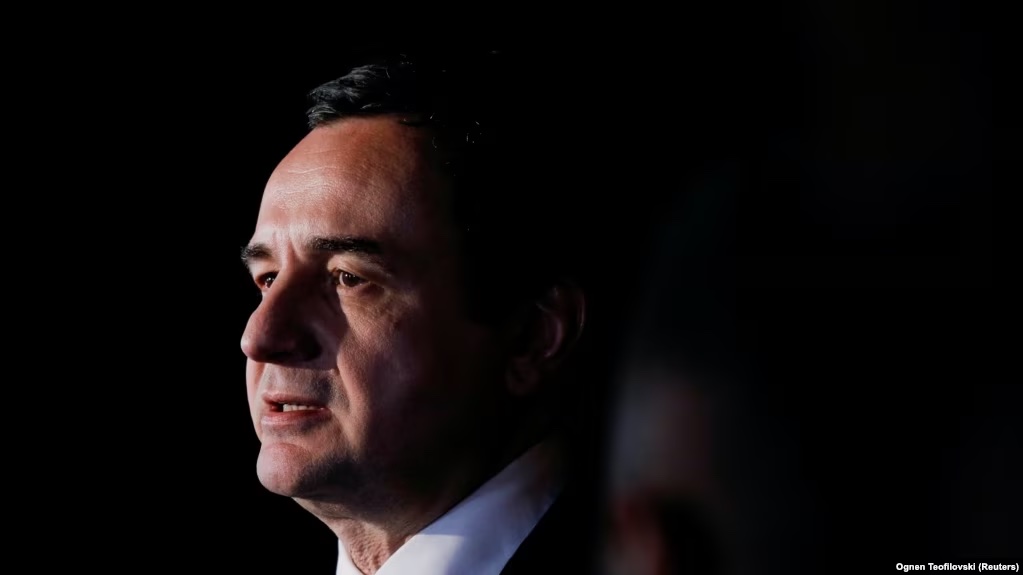Tuesday, July 30th 2013

(CNN) — A car decked out with blinking disco lights and a fog machine is driving the streets of San Francisco at night. In the back are paying passengers belting out karaoke tunes. In the front is the at-least locally recognizable Lyft pink mustache outlined with LED lights.
DiscoLyft (yes, of course he’s on Twitter) is one of the many personalized, and eccentric, cars popping up as part of the growing Lyft ride-sharing service, which is now active in San Francisco, Boston, Los Angeles and Seattle. Using the Lyft app, anyone with a Facebook account can book and pay for a ride with one of the Lyft drivers, like a more casual and kooky Uber.
The oversized, fluffy mustaches affixed to car grills started as a smart marketing gambit. But the silly accessory and Lyft’s social-focused approach ended up infusing the makeshift fleet with peppy, perky and chatty personality and attracting outgoing drivers.
During orientation, drivers are encouraged to express themselves with their vehicles, to join Twitter and to offer something extra to passengers, like candy.
“We really want everyone to have this opportunity to explore their creativity with Lyft,” said Lyft co-founder John Zimmer.
Sometimes it’s the car that’s decorated. Grant Gordon’s chalkboard-paint covered car, which was originally made for the Burning Man festival, is covered in doodles from riders and passersby. Some cars have games and other diversions; the Magnetic Poetry car keeps a Tumblr of rider’s poems.
All Lyft cars offer an array of smartphone chargers, but many drivers give out more than electricity. There are savory and sweet treats, tchotchkes and fruit. PK Rodriguez, a San Francisco driver, makes custom goodie bags filled with candy and cards bearing handwritten inspirational quotes that she says helped her get through a recent motorcycle accident (she was a passenger).
Not to be outdone by their cars, the Lyft drivers can be equally over the top. In Los Angeles, there is a driver who dresses like Batman.
“Lyft is all about being the friend with the car, treating that person as if they were a friend of yours,” said Lyft co-founder John Zimmer.
Friends don’t let friends sit quietly in the back seat playing Candy Crush while they give you a ride home from happy hour. Lyft rides are supposed to be social activities. Drivers are trained to greet riders with a fist bump as a way of breaking the ice. (Ice is very un-Lyft like.) Passengers are encouraged to sit in the front seat so they can make small talk.
The job appeals to artists, actors, DJs, and singers who want to fund their fledgling careers with flexible part-time work using their cars. Classical singer Juliana Urban fits in a full 40 hours a week around auditions. She stocks her car with clementines and Capri Suns and says the conversations and random connections she makes driving for Lyft are the best part of the job.
Snacks are big with Lyft drivers, but few have taken it as far as entrepreneur and Lyft driver Chris Biggs — aka Cookie Wars Lyft. In the morning, Biggs bakes two batches of cookies and packs them in Tupperware. Riders taste each flavor and vote for their favorites.
The winning cookie is announced on Twitter and the cookie goes on to compete against a new recipe the next day.
Angel Lozano, 35, is still in the Navy full-time, but picks up Lyft shifts in the evening. His spotless Range Rover is posh enough to pass for an Uber, with new upholstery, a custom sound system and TV screens that allow passengers to sit back and enjoy episodes of “Chappelle’s Show.”
There are others like Hip Hop Lyft, a “Ghostbusters”-themed car, and Giants Lyft. The vehicles range from scrubby Honda Civics to higher-end luxury vehicles. There are even a Jaguar and a Tesla.
The @Lyft_Diaries Twitter account keeps tabs on some of the more notable rider experiences and tweeting drivers.
The Lyft app doesn’t let people choose which car they’ll ride in, but the extra personality can still have a financial up-side. Using the Lyft app, passengers choose how much to pay to the driver after their ride and can increase or decrease the suggested amount based on how they felt about the experience. (Lyft drivers don’t see how much they were paid until the end of their shifts.)
In many ways, Lyft is the opposite of the original Bay Area community ride-sharing experience, a casual carpool. The loose network of strangers who grab rush-hour rides at preset stops has its own unwritten rules: The radio should be set to NPR and played at a soothingly low volume, and silence is golden.
Uber, which recently ran anti-Lyft ads that said “Shave the stache,” sticks to the usual car service etiquette. Cars are clean and un-adorned, riders are in the back and conversation is optional. Sidecar is a service similar to Lyft and also asks passengers to sit up front, but it hasn’t seen the same boom in creativity from drivers.
A highly social ride isn’t for everyone. Many people who want peace and quiet or a luxury, shiny black car will stick with car companies or Uber.
Shy people aren’t the only ones who don’t enjoy Lyft. Like Uber, Lyft and Sidecar have become popular alternatives to hailing a taxi or calling a cab company directly. Many taxi drivers are increasingly unhappy about the competition, claiming it is hurting their business, and have even organized protests.
The smartphone-app based services also are running into regulatory issues. The Los Angeles Department of Transportation recently issued a cease and desist order to the three companies, citing a lack of proper permits and licenses.
For now, the services are fighting to keep running and also working on expansion plans to other cities. Starting in California meant Lyft had a big pool of disco-loving, baked-goods making eccentrics, actors and Burning Man attendees willing to be drivers.
Time will tell if newer cities also embrace the weird./CNN




